Commemorative Medal for the Return of Memel (Memel Medal)
SKU: 02.GTR.0222.101.01
Estimated market value:

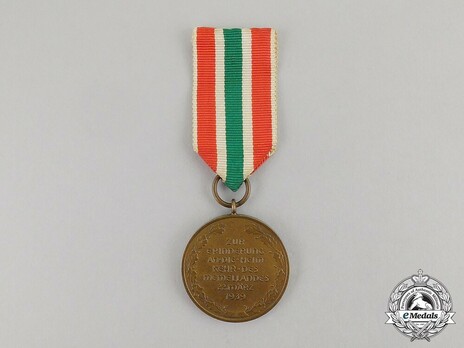
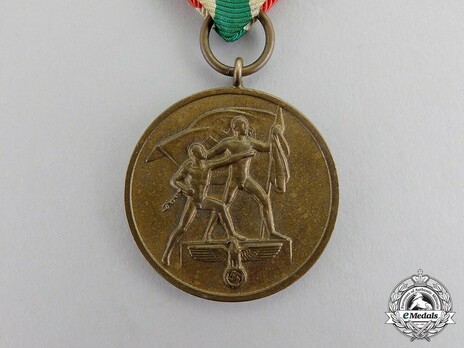
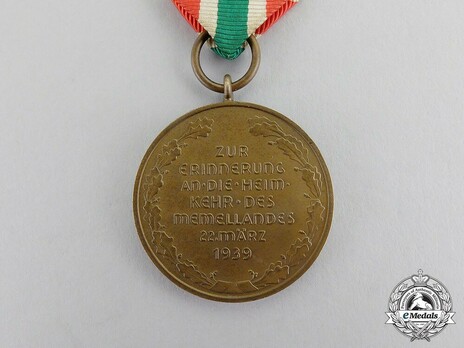
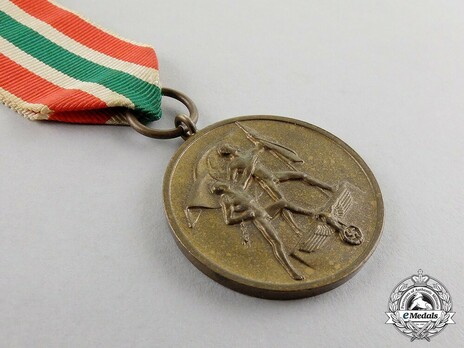
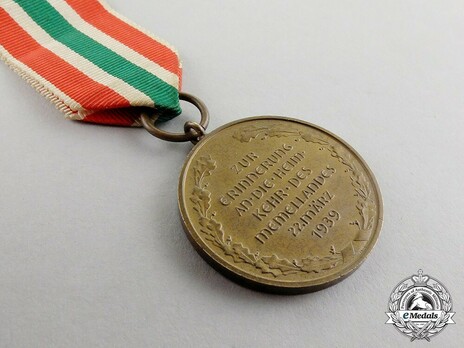
Estimated market value:
Attributes
History
The Memel Medal was instituted on May 1st, 1939, in commemoration of the bloodless transfer of the Memel district from Lithuania to Germany. In the aftermath of the First World War, the 1924 Memel Convention authorised the transfer of the district with its majority German population from East Prussia to Lithuania. Once Hitler had seized power, he demanded the immediate return of the district to Germany, and the Lithuanian government acquiesced without a struggle.
The Memel Medal was the last of the commemorative annexation awards, also known as the “Flower War Medals”, and therefore the obverse of the medal features the same design as that of the Anschluss and Sudetenland Medal. The award was conferred upon army personnel who participated in the annexation of the Memel land on March 22, 1939. The Medal was also conferred upon political and civil servants whose efforts made the annexation possible.
As of December 31st, 1940, the award had been conferred 31,322 times. No further awards were issued after this date.
Most medals are made from either tombac or bronze, but a few other materials, including zinc or magnetic alloys can also be found.
Medals of the so-called Straight G Type feature the letter G in the word “Erinnerung” with a stem that doesn’t slant, but is kept straight. Medals with this feature were produced by the following makers: B. H. Mayer, O. Schickle, Petz & Lorenz, Steinhauer & Lück, W. Deumer, Unknown Maker: possibly F. Zimmermann, Unknown Maker: the Schreiber.
Medals of the so-called Slanted G Type feature the letter G in the word “Erinnerung” with a stem that slants to the left. These medals are of high quality and are almost all made of tombac. Medals with this feature were produced by the following makers: Hauptmünzamt Berlin, P. Meybauer, Unknown Maker: possibly Förster & Barth, Unknown Maker: possibly Rudolf Berge.
Medals by B. H. Mayer are considered extremely rare. They are often stamped on the rim with the company’s LDO number, “L/18”.
Medals by the Hauptmünzamt (main mint) Berlin are considered scarce. On original packaging the name “Preußische Staatsmünze Berlin” appears. The name was changed in 1941.
On medals by this maker, the eyelet is always a little bit off-centred to the right.
Medals by O. Schickle are considered extremely rare. They are immediately recognisable by the empty space between the wreath bands on the bottom of the reverse.
Medals by P. Meybauer are considered rarer than extremely rare. They are also known as the “double acorn” medals, referring to the two pairs of acorns on the bottom of the reverse. While medals by other makers also feature two pairs of acorns, on these medals they are more widely spaced, and each acorn has its own stem. Some of these medals are marked on the rim with the company’s LDO number, “L/13”.
Medals by Petz & Lorenz are considered rare. There are two types, of which the first one is rarer than extremely rare. This type features the designer’s initials, “RK” (for Richard Klein), above the left foot of the man holding the flag. The other type of medal by Petz & Lorenz does not show this feature.
Medals by Steinhauer & Lück are considered extremely rare. Some are stamped on the rim with the company’s LDO number, “L/16”.
Medals by Deumer are considered rare. Some of them are marked, either on the rim or on the ring, with the company’s LDO number, “L/11”.
Medals by one of the Unknown Makers is suspected to be made by the company of Förster & Barth. However, the evidence for this is not entirely convincing, since it is solely based on the find of one of these medals with F&B’s PKZ number “10” on the ring. These medals are very close in design to the Hauptmünzamt Berlin medals, to the point that they could be made by this maker. Medals by this maker are considered scarce.
Medals by this Unknown Maker, suspected to be F. Zimmermann, are considered scarce.
It has been speculated that one of the Unknown Makers could be Rudolf Berge of Gablonz, since their Sudetenland Medal’s obverse is exactly the same. These medals are considered rare.
Medals by this Unknown Maker are considered extremely rare. They have been nicknamed “the Schreiber” after Georg Schreiber, one of the two authors of the book “Die Ehrenzeichen des Deutschen Reiches” (The Honour Badges of the German Reich) from 1940, in which one appears. It has been speculated that the maker is the company Assmann. The medal is easily recognizable by a die flaw on the bottom of the reverse, a little bit to the left as viewed.

Versions
$300 USD
Rev: ZUR ERINNERUNG AN DIE HEIMKEHR DES MEMELLANDES 22. MÄRZ 1939
32mm
$300 USD
Rev: ZUR ERINNERUNG AN DIE HEIMKEHR DES MEMELLANDES 22. MÄRZ 1939
32mm
$300 USD
Rev: ZUR ERINNERUNG AN DIE HEIMKEHR DES MEMELLANDES 22. MÄRZ 1939
32mm
$300 USD
Rev: ZUR ERINNERUNG AN DIE HEIMKEHR DES MEMELLANDES 22. MÄRZ 1939
32mm
$300 USD
Bronze gilt
Rev: ZUR ERINNERUNG AN DIE HEIMKEHR DES MEMELLANDES 22. MÄRZ 1939
32mm
$300 USD
Rev: ZUR ERINNERUNG AN DIE HEIMKEHR DES MEMELLANDES 22. MÄRZ 1939
32mm
$300 USD
Rev: ZUR ERINNERUNG AN DIE HEIMKEHR DES MEMELLANDES 22. MÄRZ 1939
32mm
$300 USD
Rev: ZUR ERINNERUNG AN DIE HEIMKEHR DES MEMELLANDES 22. MÄRZ 1939
32mm
$300 USD
Rev: ZUR ERINNERUNG AN DIE HEIMKEHR DES MEMELLANDES 22. MÄRZ 1939
32mm
$300 USD
Rev: ZUR ERINNERUNG AN DIE HEIMKEHR DES MEMELLANDES 22. MÄRZ 1939
32mm
$300 USD
Rev: ZUR ERINNERUNG AN DIE HEIMKEHR DES MEMELLANDES 22. MÄRZ 1939
32mm


Comments
Sign in to comment and reply.


Scroll Top